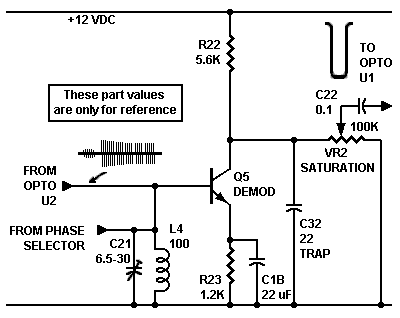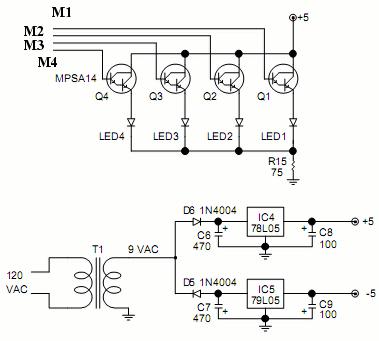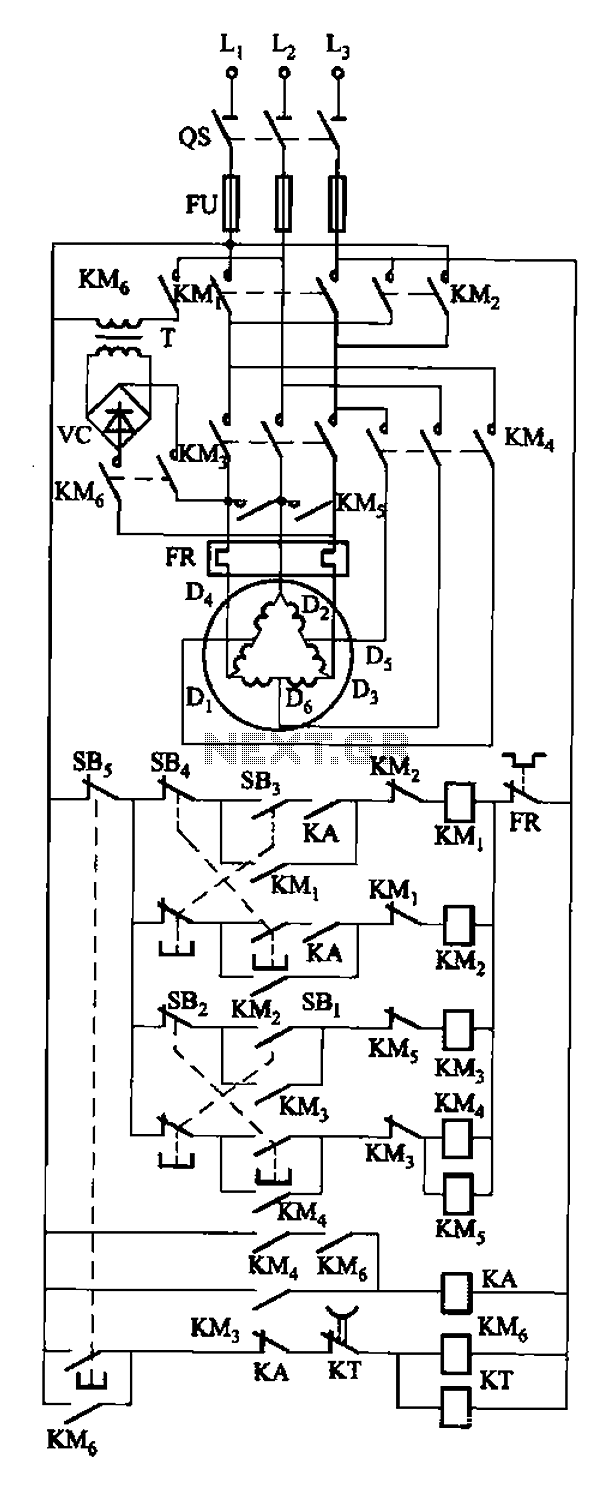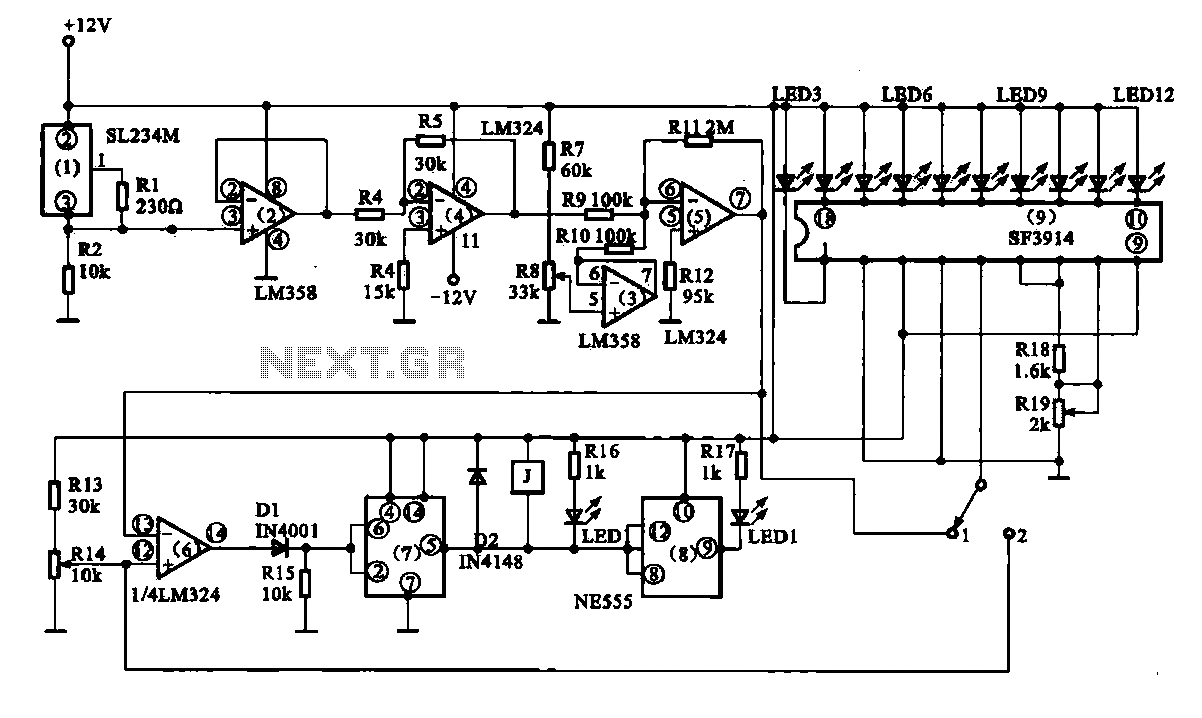
latest Wailing Alarm Siren circuit Schematic with explanation
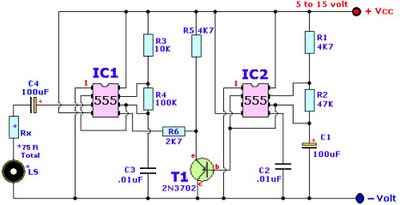
Browse home alarm circuit explanation latest schematic siren wailing with latest Wailing Alarm Siren circuit schematic with explanation. The loudspeaker LS and the resistor marked Rx should be together 75 ohms. If a standard 8-ohm speaker is used, then Rx is 67 ohms, with the nearest value being 68 ohms. For a 4-ohm loudspeaker, Rx is 71 ohms; for a 25-ohm loudspeaker, Rx is 50 ohms, and so on.
The Wailing Alarm Siren circuit is designed to produce a loud, attention-grabbing sound, typically used in security systems or alert mechanisms. At the heart of this circuit is a loudspeaker (LS) which requires an appropriate resistor (Rx) to ensure optimal performance and sound quality. The combination of the loudspeaker and the resistor should total 75 ohms to achieve the desired output.
For an 8-ohm loudspeaker, the calculated resistor value is 67 ohms. However, in practice, the nearest standard resistor value of 68 ohms is recommended. This small adjustment helps to maintain the integrity of the sound produced while ensuring the circuit operates safely without overloading the components. Similarly, for a 4-ohm loudspeaker, a resistor value of 71 ohms is suggested, while for a 25-ohm loudspeaker, a resistor value of 50 ohms is appropriate.
The circuit may include additional components such as transistors, diodes, or capacitors to enhance functionality, control the sound output, or manage power distribution. Each component plays a critical role in the overall performance of the siren, ensuring that it can produce a loud, wailing sound that effectively alerts individuals in the vicinity. Proper selection of these components is essential for achieving the desired performance characteristics of the alarm system.Browse » home » alarm » circuit » explanation » latest » schematic » siren » wailing » with » latest Wailing Alarm Siren circuit Schematic with explanation *The Loudspeaker LS and the resistor marked Rx should be together 75 ohms. If you have a standard 8-ohm speaker then Rx is 67 ohms. The nearest value is 68 ohms. So for a 8 ohm lou dspeaker Rx is 68 ohms. For a 4 ohm loudspeaker Rx is 71 ohms, for a 25 ohm loudspeaker Rx is 50 ohms, etc, etc. 🔗 External reference
The Wailing Alarm Siren circuit is designed to produce a loud, attention-grabbing sound, typically used in security systems or alert mechanisms. At the heart of this circuit is a loudspeaker (LS) which requires an appropriate resistor (Rx) to ensure optimal performance and sound quality. The combination of the loudspeaker and the resistor should total 75 ohms to achieve the desired output.
For an 8-ohm loudspeaker, the calculated resistor value is 67 ohms. However, in practice, the nearest standard resistor value of 68 ohms is recommended. This small adjustment helps to maintain the integrity of the sound produced while ensuring the circuit operates safely without overloading the components. Similarly, for a 4-ohm loudspeaker, a resistor value of 71 ohms is suggested, while for a 25-ohm loudspeaker, a resistor value of 50 ohms is appropriate.
The circuit may include additional components such as transistors, diodes, or capacitors to enhance functionality, control the sound output, or manage power distribution. Each component plays a critical role in the overall performance of the siren, ensuring that it can produce a loud, wailing sound that effectively alerts individuals in the vicinity. Proper selection of these components is essential for achieving the desired performance characteristics of the alarm system.Browse » home » alarm » circuit » explanation » latest » schematic » siren » wailing » with » latest Wailing Alarm Siren circuit Schematic with explanation *The Loudspeaker LS and the resistor marked Rx should be together 75 ohms. If you have a standard 8-ohm speaker then Rx is 67 ohms. The nearest value is 68 ohms. So for a 8 ohm lou dspeaker Rx is 68 ohms. For a 4 ohm loudspeaker Rx is 71 ohms, for a 25 ohm loudspeaker Rx is 50 ohms, etc, etc. 🔗 External reference


